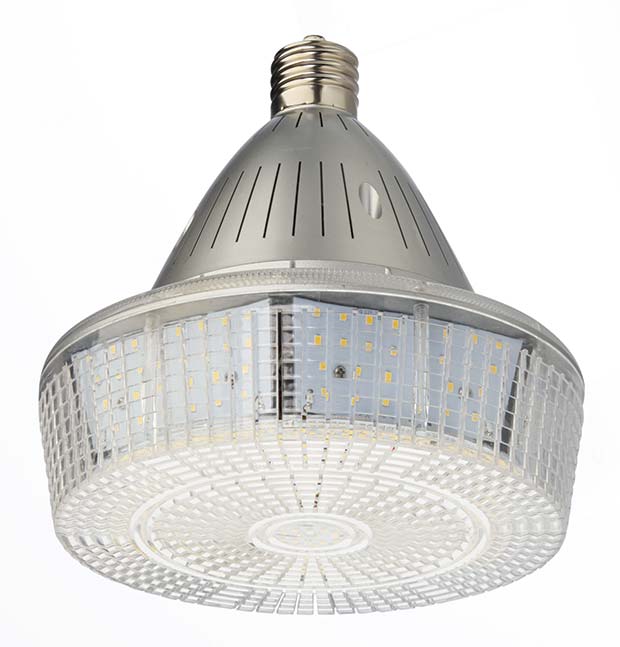Michael Morrison, Light Efficient Design UK Limited. With rising demand the cost of LEDs and fittings is gradually falling. However, if installing complete fittings is required it can still be prohibitive for warehouses seeking to costjustify sweeping upgrades from legacy high intensity discharge (HID) lamps to LED.
 This is where LED HID retrofit lamps can offer an alternative, more economical and non-invasive solution by virtue of retaining the existing light fittings and fixtures. One or two manufacturers are now able to address the most typical HID re-lamping applications by replacing 50 – 1000 Watt lamps with fully CE/ROHS tested LED retrofits, including low bays and high bays for lighting warehouse and factory interiors.
This is where LED HID retrofit lamps can offer an alternative, more economical and non-invasive solution by virtue of retaining the existing light fittings and fixtures. One or two manufacturers are now able to address the most typical HID re-lamping applications by replacing 50 – 1000 Watt lamps with fully CE/ROHS tested LED retrofits, including low bays and high bays for lighting warehouse and factory interiors.
The LED retrofit installation is simple enough. Having assessed the wattage of the lamp to be replaced and selecting the appropriate LED lamp, remove the existing lamp, bypass the ballast and then connect the new LED retrofit lamp. The process should take about the same time as a typical HID re-lamping.
Apart from the energy savings, after the initial payback period (normally between 12 to 15 months) the LED retrofit lamps can be easily and cost-effectively replaced with a more efficient version of the same lamp.
When sourcing these types of products ensure test performance data is based on external testing by accredited laboratories, carried out in accordance with LM79 and LM80 standards. It is also highly advisable to check the correct thermal management of the LEDs and drivers in order to reach the 50,000 hour promised lifetime. Retrofits which integrate long life fans specially developed for cooling LEDs will therefore be a prerequisite for many applications.
Condensation, dust, chemicals and shock can all adversely affect long term reliability and light quality. To address this, a handful of LED retrofit manufacturers are now applying new production techniques to further enhance the performance of their solutions. The use of a conformal coating, for example, to electrically insulate the circuit from environment stresses. Furthermore the anti-corrosive properties of the polymer will extend circuit life.
A further potential reliability issue is in installations where the ballast has not been bypassed. While there are products on the market which negate this, it is recommended to always bypass or remove the ballast, as using control gear adds wasted wattage. Old control gear can always fail and it is almost impossible to know how long the control gear has been in operation, so it must be viewed as unreliable.
What to look for:
• CE/ROHS tested LED HID retrofits with guaranteed lifetimes
• Correct installation – always bypass the ballast
• Suppressors to protect against surges and spikes in cases of poor power supply quality
• Colour temperature and CRI of the lamp. 80 CRI should be seen as a minimum for internal lighting applications. 4000k is probably the maximum with 3000k preferable for some interiors.
LIGHT EFFICIENT DESIGN UK
Tel: 0333 5778133
Email: sales@ledukltd.com




Comments are closed.